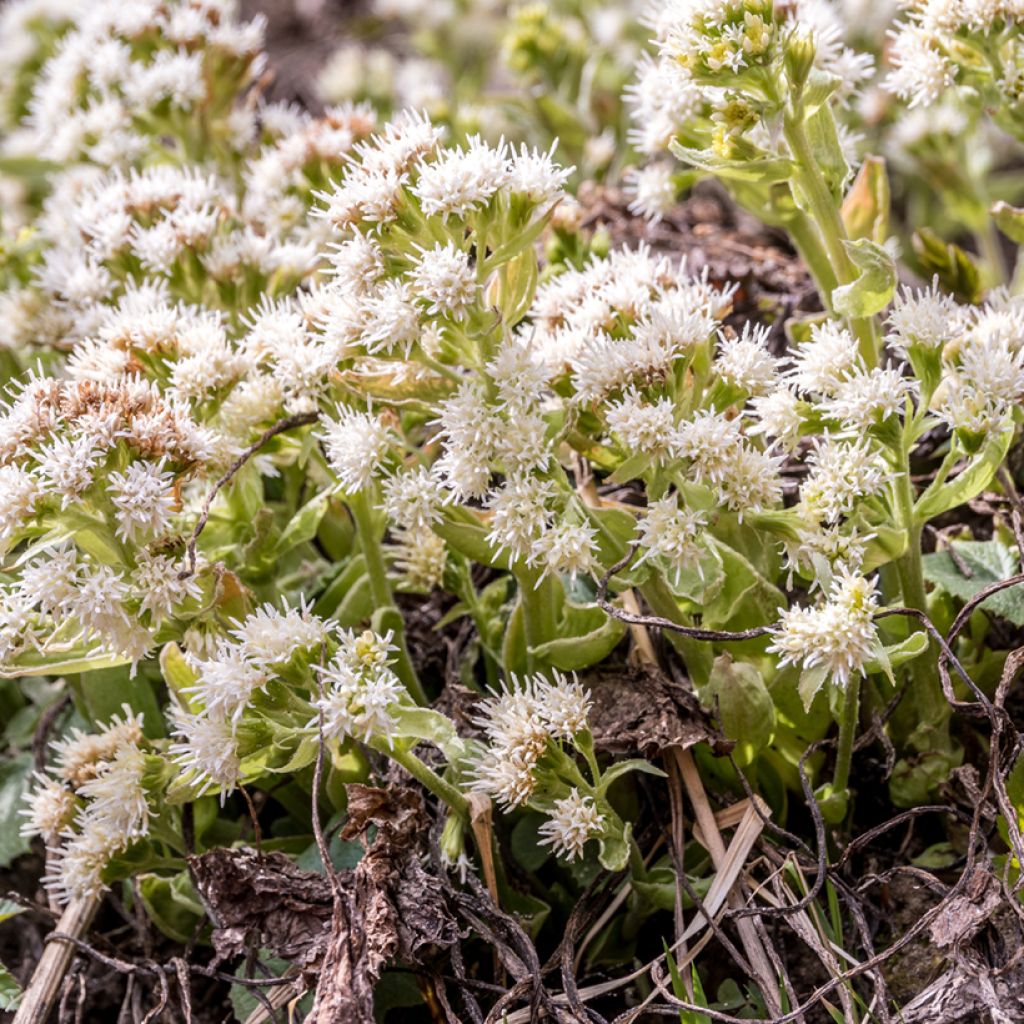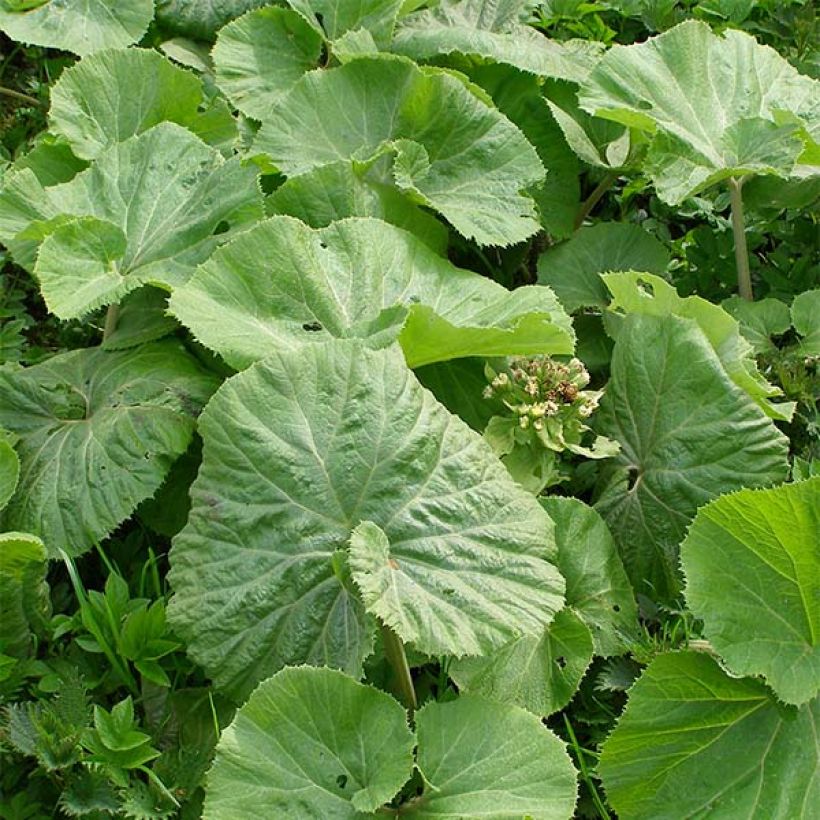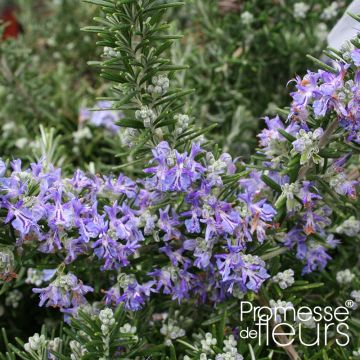

Petasites albus


Petasites albus


Petasites albus


Petasites albus


Petasites albus


Petasites albus


Petasites albus


Petasites albus
Petasites albus
Petasites albus
White Butterbur
Water arrived in good condition, young plant still has moist soil, quick delivery and impeccable follow-up. Now we just have to see if the young plant takes root properly after planting.
Marion M., 17/01/2019
Special offer!
Receive a €20 voucher for any order over €90 (excluding delivery costs, credit notes, and plastic-free options)!
1- Add your favorite plants to your cart.
2- Once you have reached €90, confirm your order (you can even choose the delivery date!).
3- As soon as your order is shipped, you will receive an email containing your voucher code, valid for 3 months (90 days).
Your voucher is unique and can only be used once, for any order with a minimum value of €20, excluding delivery costs.
Can be combined with other current offers, non-divisible and non-refundable.
Home or relay delivery (depending on size and destination)
Schedule delivery date,
and select date in basket
This plant carries a 12 months recovery warranty
More information
We guarantee the quality of our plants for a full growing cycle, and will replace at our expense any plant that fails to recover under normal climatic and planting conditions.

Would this plant suit my garden?
Set up your Plantfit profile →
Description
Petasites albus, also known as white butterbur, is a perennial rhizomatous ground cover plant that thrives in shaded areas and moist environments. It is most beautiful when its roots are in water. In spring, its inflorescences emerge from the ground and elongate into globose spikes adorned with small white and fragrant heads. Large heart-shaped leaves with toothed edges then appear. They are matte green on the front and woolly on the back. It is an interesting plant to bring a touch of lushness to the edge of a water feature in a large garden. However, its tendency to spread should be controlled. Slightly smaller than Petasites hybridus, it, like its cousin, prefers moist soil and dislikes scorching sun.
Petasites albus is native to Northern Europe. In its natural habitat, this powerful herbaceous perennial colonises rocks, wet areas, and shaded ravines.
White butterbur forms a strongly carpeting clump reaching 30 to 60cm (12 to 24in). In theory, it spreads without limits over time, using its powerful creeping rhizome. The plant blooms from March to May, depending on the climate, before the leaves appear. Developing from grey leaves, the inflorescence emerges from the ground, carried by a leafy stem, with alternate, elongated, sessile, and pointed leaves, which are very different from the large basal leaves that will appear after flowering. The inflorescence takes the form of an ovoid and compact cluster, 10 to 25cm (4 to 10in) high. It consists of small female or male heads gathered in panicles. The white flowers, 1cm (0.4in) in diameter, emit a light sweet fragrance reminiscent of honey. The deciduous basal foliage appears at a later stage. It consists of large, veined, kidney-shaped leaves, with rounded lamina, reaching 30 to 50cm (12 to 20in) or more in diameter. Their colour is a matte green, with a whitish bloom due to the presence of fuzz on both sides. They are edged with a regularly toothed margin and have a long hairy petiole.
Petasites albus is a fast-growing plant, useful for adding a lush touch to the boundaries of a very large garden, to colonise a ditch, a cool rockery, or a somewhat neglected moist woodland. Its fragrance will waft into the more 'civilized' areas of the garden and brighten up a slightly dark corner. However, care must be taken to ensure that it does not exceed the designated limits, as it disregards property boundaries and neighbourly rules. Since it loves moisture and dislikes the sun, it can be effortlessly contained by creating a dry rockery in its path, where the sun prevails over shade. It can be paired with snowdrops, Solomon's seal, and well-established peonies.
Report an error about the product description
Petasites albus in pictures






Flowering
Foliage
Plant habit
Botanical data
Petasites
albus
Asteraceae
White Butterbur
Western Europe
Other Perennials A to Z
View all →Planting and care
Petasites albus grows without any difficulty in shade or partial shade, in constantly moist or even wet, calcareous, neutral or acidic soil. It is hardy down to at least -20°C (-4°F) and tolerates a sunny exposure if the soil is very moist. Limit its lateral growth by digging around the planting area in early spring, on the periphery, to remove wandering rootstocks.
Planting period
Intended location
Care
-
, onOrder confirmed
Reply from on Promesse de fleurs
Similar products
Haven't found what you were looking for?
Hardiness is the lowest winter temperature a plant can endure without suffering serious damage or even dying. However, hardiness is affected by location (a sheltered area, such as a patio), protection (winter cover) and soil type (hardiness is improved by well-drained soil).

Photo Sharing Terms & Conditions
In order to encourage gardeners to interact and share their experiences, Promesse de fleurs offers various media enabling content to be uploaded onto its Site - in particular via the ‘Photo sharing’ module.
The User agrees to refrain from:
- Posting any content that is illegal, prejudicial, insulting, racist, inciteful to hatred, revisionist, contrary to public decency, that infringes on privacy or on the privacy rights of third parties, in particular the publicity rights of persons and goods, intellectual property rights, or the right to privacy.
- Submitting content on behalf of a third party;
- Impersonate the identity of a third party and/or publish any personal information about a third party;
In general, the User undertakes to refrain from any unethical behaviour.
All Content (in particular text, comments, files, images, photos, videos, creative works, etc.), which may be subject to property or intellectual property rights, image or other private rights, shall remain the property of the User, subject to the limited rights granted by the terms of the licence granted by Promesse de fleurs as stated below. Users are at liberty to publish or not to publish such Content on the Site, notably via the ‘Photo Sharing’ facility, and accept that this Content shall be made public and freely accessible, notably on the Internet.
Users further acknowledge, undertake to have ,and guarantee that they hold all necessary rights and permissions to publish such material on the Site, in particular with regard to the legislation in force pertaining to any privacy, property, intellectual property, image, or contractual rights, or rights of any other nature. By publishing such Content on the Site, Users acknowledge accepting full liability as publishers of the Content within the meaning of the law, and grant Promesse de fleurs, free of charge, an inclusive, worldwide licence for the said Content for the entire duration of its publication, including all reproduction, representation, up/downloading, displaying, performing, transmission, and storage rights.
Users also grant permission for their name to be linked to the Content and accept that this link may not always be made available.
By engaging in posting material, Users consent to their Content becoming automatically accessible on the Internet, in particular on other sites and/or blogs and/or web pages of the Promesse de fleurs site, including in particular social pages and the Promesse de fleurs catalogue.
Users may secure the removal of entrusted content free of charge by issuing a simple request via our contact form.
The flowering period indicated on our website applies to countries and regions located in USDA zone 8 (France, the United Kingdom, Ireland, the Netherlands, etc.)
It will vary according to where you live:
- In zones 9 to 10 (Italy, Spain, Greece, etc.), flowering will occur about 2 to 4 weeks earlier.
- In zones 6 to 7 (Germany, Poland, Slovenia, and lower mountainous regions), flowering will be delayed by 2 to 3 weeks.
- In zone 5 (Central Europe, Scandinavia), blooming will be delayed by 3 to 5 weeks.
In temperate climates, pruning of spring-flowering shrubs (forsythia, spireas, etc.) should be done just after flowering.
Pruning of summer-flowering shrubs (Indian Lilac, Perovskia, etc.) can be done in winter or spring.
In cold regions as well as with frost-sensitive plants, avoid pruning too early when severe frosts may still occur.
The planting period indicated on our website applies to countries and regions located in USDA zone 8 (France, United Kingdom, Ireland, Netherlands).
It will vary according to where you live:
- In Mediterranean zones (Marseille, Madrid, Milan, etc.), autumn and winter are the best planting periods.
- In continental zones (Strasbourg, Munich, Vienna, etc.), delay planting by 2 to 3 weeks in spring and bring it forward by 2 to 4 weeks in autumn.
- In mountainous regions (the Alps, Pyrenees, Carpathians, etc.), it is best to plant in late spring (May-June) or late summer (August-September).
The harvesting period indicated on our website applies to countries and regions in USDA zone 8 (France, England, Ireland, the Netherlands).
In colder areas (Scandinavia, Poland, Austria...) fruit and vegetable harvests are likely to be delayed by 3-4 weeks.
In warmer areas (Italy, Spain, Greece, etc.), harvesting will probably take place earlier, depending on weather conditions.
The sowing periods indicated on our website apply to countries and regions within USDA Zone 8 (France, UK, Ireland, Netherlands).
In colder areas (Scandinavia, Poland, Austria...), delay any outdoor sowing by 3-4 weeks, or sow under glass.
In warmer climes (Italy, Spain, Greece, etc.), bring outdoor sowing forward by a few weeks.



















































